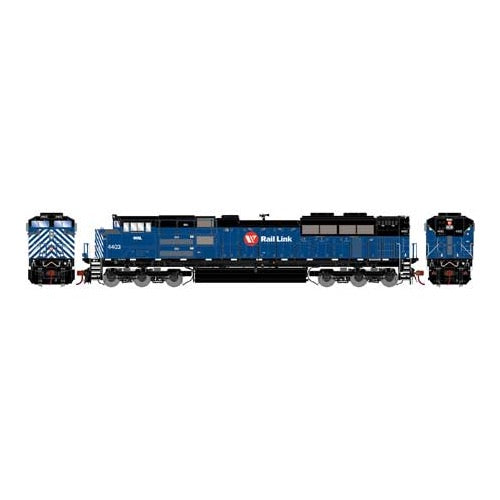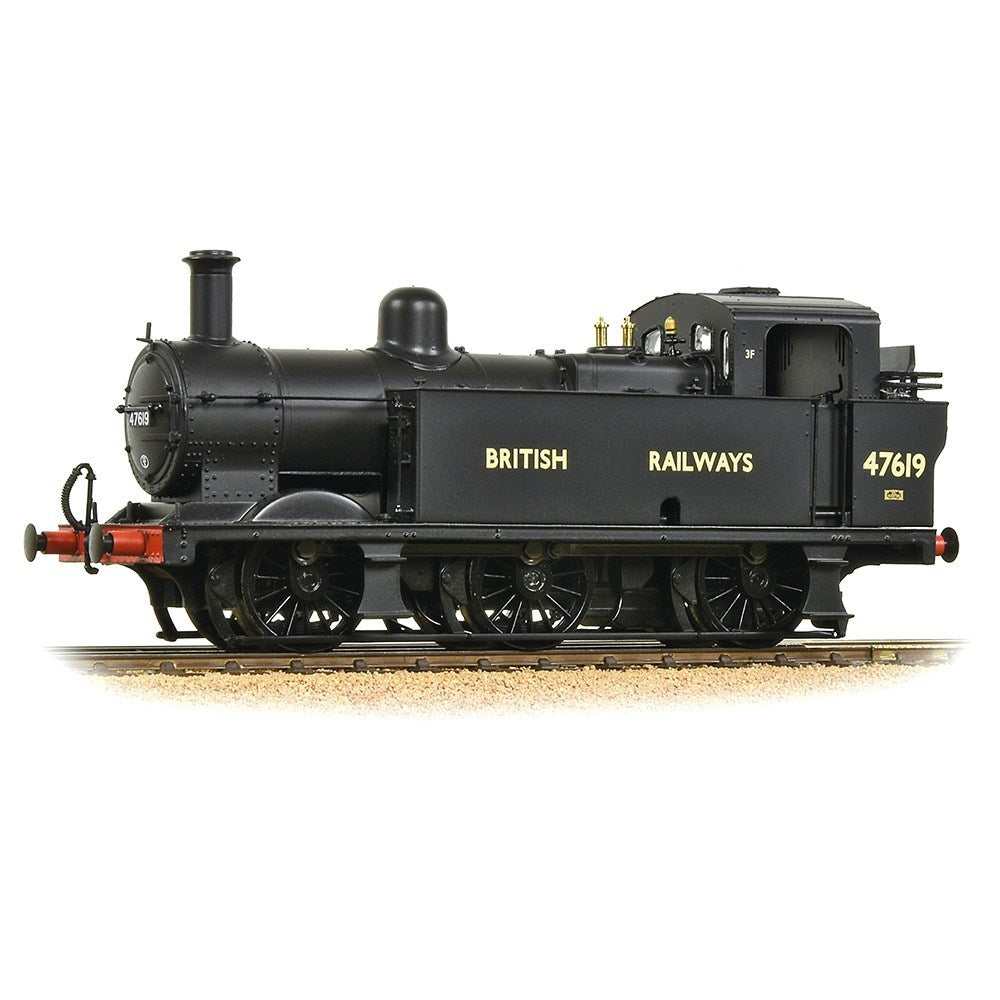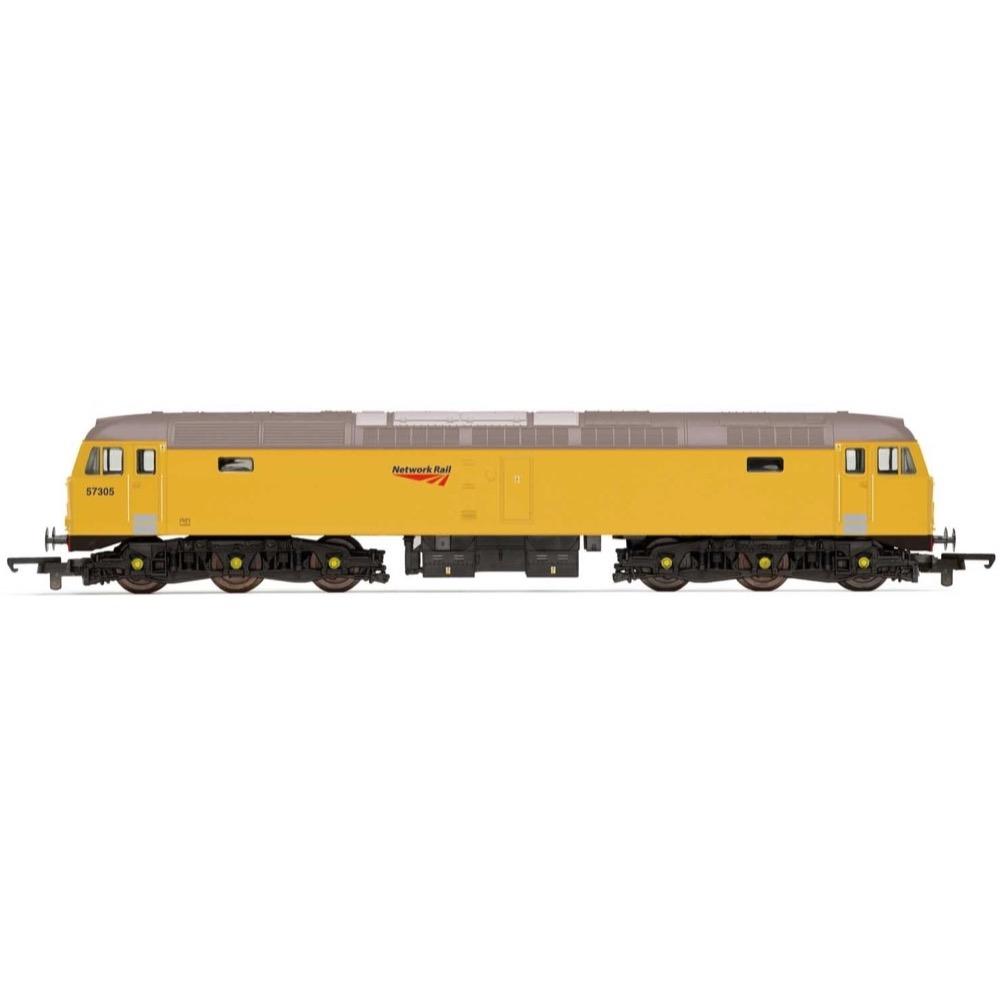
Hornby R30043 OO Network Rail Class 57 Co-Co 57305 Locomotive
Between 1998 and 2004, 33 of the locomotives were converted from Class 47s to Class 57s by Brush Traction. The Class 57 features re-conditioned EMD engines and new traction alternators.
Network Rail leased six Class 57s fitted with either tightlock couplings or Dellner couplers enabling them to be used as rescue engines for EMUs in the south of England, with the locomotives having fulfilled a similar function as Virgin Train Thunderbirds on the ECML.
A locomotive with plenty of history and style is a worthy addition to any train enthusiast's collection while adding a modern and colourful twist.
Specifications
- Item Length - Without Packaging (cm): 25.1
- Item Height - Without Packaging (cm): 5
- Item Width - Without Packaging (cm): 3.5
- Item Weight - Without Packaging: 0.23
- Item Scale: 1:76 Scale 00 Gauge
- License: No
- Finish: Painted
- Colour: Yellow
- Gauge: OO
- DCC Status: DCC Ready 8 pin socket
- Operator: Network Rail
- Designer: Brush
- Livery: Network Rail
- Minimum Curve (mm): Radius 2
- Motor: 3 Pole
- Number of Parts: 1
- Class: Class 57
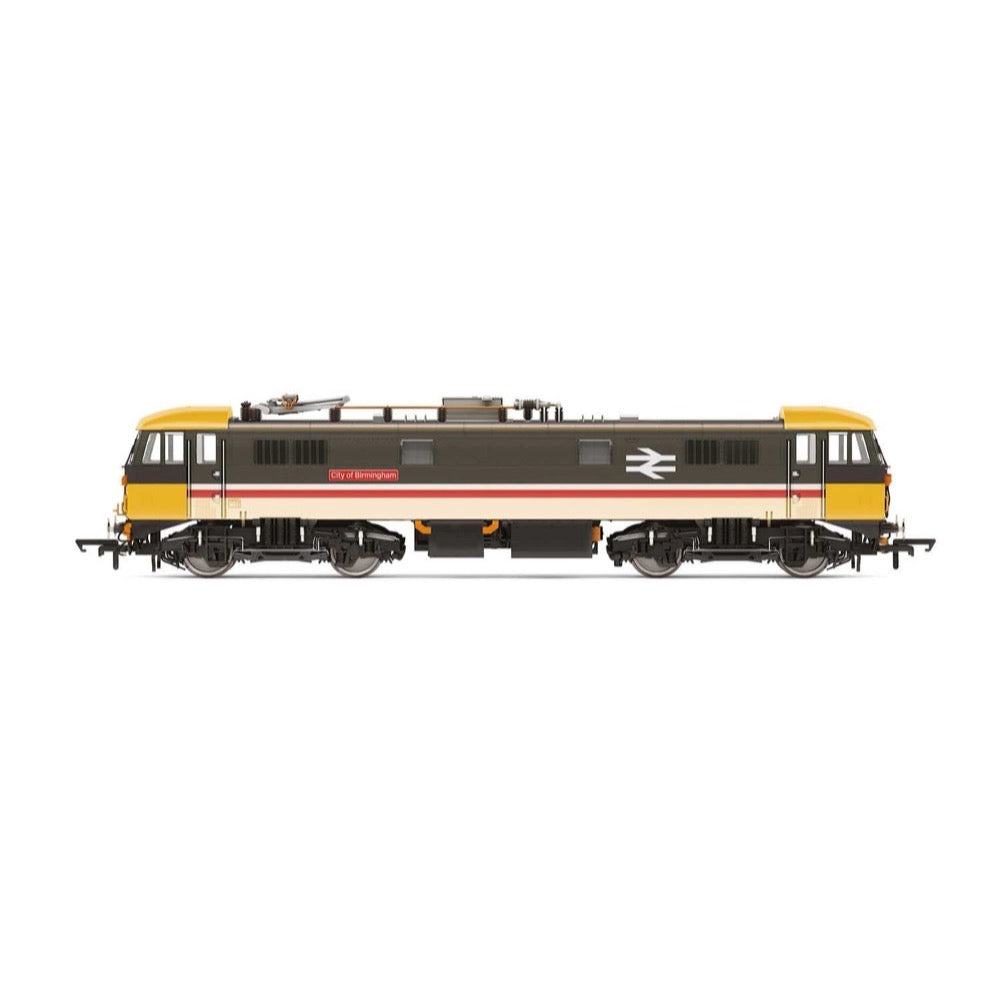
Hornby R30031 OO BR Class 87 Bo-Bo 87009 City of Birmingham
The Class 87 locomotive design resulted from a requirement for a more powerful mixed traffic electrical locomotive by British Rail, needed to cope with the route gradients of the West Coast Main Line between Weaver Junction and Glasgow.
Electrification had been newly authorised over this section in 1970 and was scheduled for completion by May 1974, leaving little time to design a completely new locomotive from scratch and so British Rail decided to base the new class on the existing Class 86 locomotives. The British Railways Board placed an order for thirty four locomotives, later to be increased to thirty six, with British Rail Engineering Ltd at Crewe, GEC Traction providing the electrical equipment. Designed from the outset to work in pairs, as well as in parallel with the Class 86 fleet, the Class 87 was broadly similar to the Class 86 in terms of layout and styling, but mechanically it was a very different.
Immediately identifiable by its new twin windscreen cab, multiple-unit control cables and a redesigned BP9 bogie with Flexicoil suspension, the new locomotives were assembled during 1973-74 and were geared for 110mph running on the WCML, being able to haul 450 ton passenger trains, or 750 ton freight trains single handed. With a power rating of 5000hp, they were to be the most powerful locomotives to run under British Rail until the late 1980s. The first locomotive, 87001, entered traffic in June 1973, the remainder of the fleet being deployed in the general West Coast pool as they entered service, operating Euston to Preston services as the WCML's electrification spread north.
On April 22, 1974 the new West Coast 'Electric Scot' service was introduced, marking a major launch for the class and journey times from London-Glasgow were cut to just five hours. When British Railways reversed its locomotive naming policy in 1977, the class were given the generic title of 'Royal Scot' and named from a selection of famous steam hauled predecessors.
Sectorisation of the railways in the late 1980s/early 1990s meant rail freight operations were wound down and the fleet were engaged solely on passenger services. Following complete privatisation in the mid-1990s, Porterbrook leasing took over ownership of the fleet, but the introduction of the Pendolino trains led to the Class 87s being withdrawn from the core InterCity routes and complete withdrawal began in 2003, with 87016 being the first to be dismantled in November 2004. The last mainstream locomotive hauled service took place on June 10, 2005 and Porterbrook began to look at how best to employ the locomotives, spells with DRS, Cotswold Rail and First GBRf ensuing.
The fleet, not being fitted with On Train Monitoring and Recording (OTMR) could not operate beyond January 1, 2008 and were finally withdrawn from service, some going to Bulgaria between 2008 and 2012. No. 87009 entered traffic in November 1973 named 'City of Birmingham'. In 2012, 87009 was exported to Bulmarket, Bulgaria.
Specifications
- Item Length - Without Packaging (cm): 24.3
- Item Height - Without Packaging (cm): 5
- Item Width - Without Packaging (cm): 3.5
- Item Weight - Without Packaging: 0.57
- Item Scale: 1:76 Scale 00 Gauge
- License: No
- Finish: Painted
- Colour: Grey
- Gauge: OO
- DCC Status: DCC Ready 21 pin socket
- Operator: BR
- Designer: BREL
- Livery: BR Executive
- Minimum Curve (mm): Radius 2
- Motor: 5 Pole Skew wound
- Number of Parts: 1
- Motor: 5 pole skew wound
- Class: Class 87
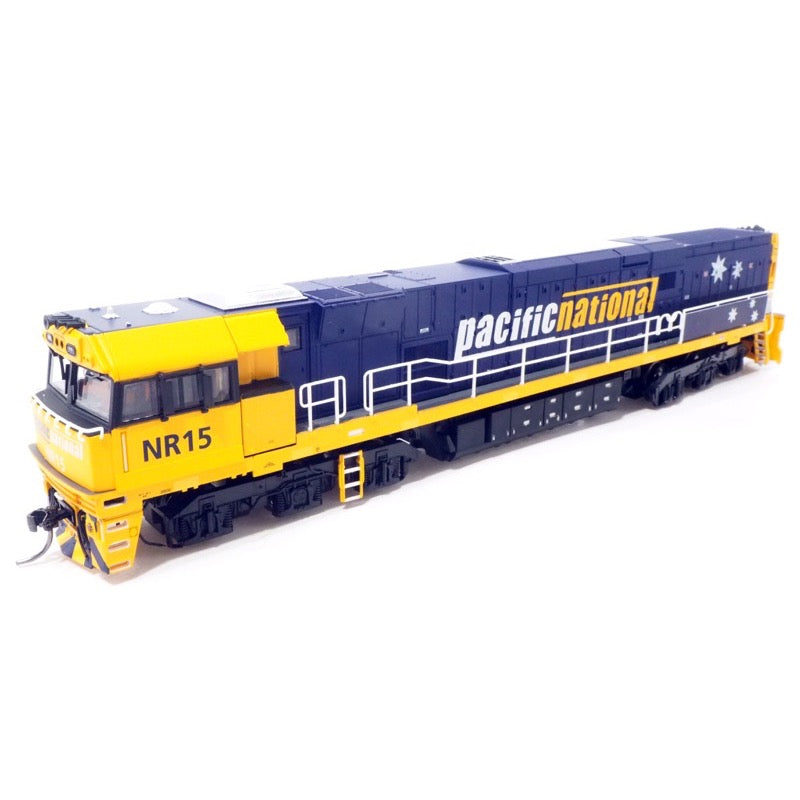
SDS Models HO NR15 Pacific National 4 Stars NR Class Locomotive
Introduced in 1996 by National Rail Corporation these 120 units were built by A Goninan and Co. The locomotives are 3000kw General Electric powered and used on standard gauge Australia wide.
They were introduced in grey and marigold and several were painted into various business units of NRC. Later they wore GSR train liveries representing the Hook and Pull agreement between the two companies.
In 2002 Pacific National acquired the assets of NRC and commenced to repaint the NR class into their new blue and yellow colours.
The model features the current tooling from Austrains and includes operating headlights, marker and ditch lights and is Kadee equipped. These are an ideal way to add colour to your collection.
Feature
- Highly detailed Ready-to-Run HO gauge model
- Precisely tooled plastic body (ABS)
- Genuine Kadee scale head whisker coupler
- Separately applied handrails and detail parts
- 5-Pole skew wound electric motor and dual flywheels
- All wheel drive and electrical pickup
- LED headlights, marker lights, number boxes and ditch lights
- All models come standard with an MTC 21 pin motherboard
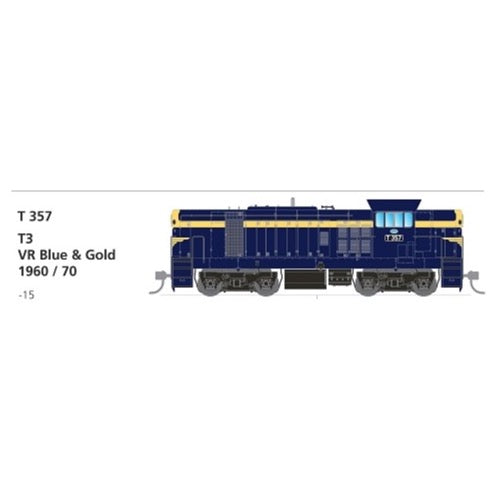
SDS Models HO T357 VR Blue & Gold T3 Series T Class Locomotive
SDS Models HO T357 VR Blue & Gold T3 Series T Class Locomotive
The Victorian Railways received their second series of T class locomotives from late 1959, these were mechanically similar to the first series but featured a new raised height operating cab layout. This new style of raised cab design featured throughout the remainder of the T class series.
SDS Models are pleased to offer the inclusion of the T-2 series within their range of Victorian Railways T class models.
Based upon the tried and proven Austrains T class mechanism, SDS Models have comprehensively retooled almost every item, bringing the model inline with their exacting scale and design standards. Some 220 new or re-made parts are involved in the production of the four series.
All the models now feature prototypically correct width long hoods, series specific and appropriate fuel tank and battery box combinations, improved appearance bogie side frames and brake shoe / wheel tread alignment and a host of other design detail enhancements.
Model Features:
- Highly detailed Ready-to-Run HO gauge model
- Precisely tooled plastic body (ABS)
- Genuine Kadee scale head whisker coupler
- Separately applied handrails and detail parts
- 5-Pole skew wound electric motor and dual flywheels
- All wheel drive and electrical pickup
- LED head and marker lights
- All models come standard with an MTC 21 pin motherboard
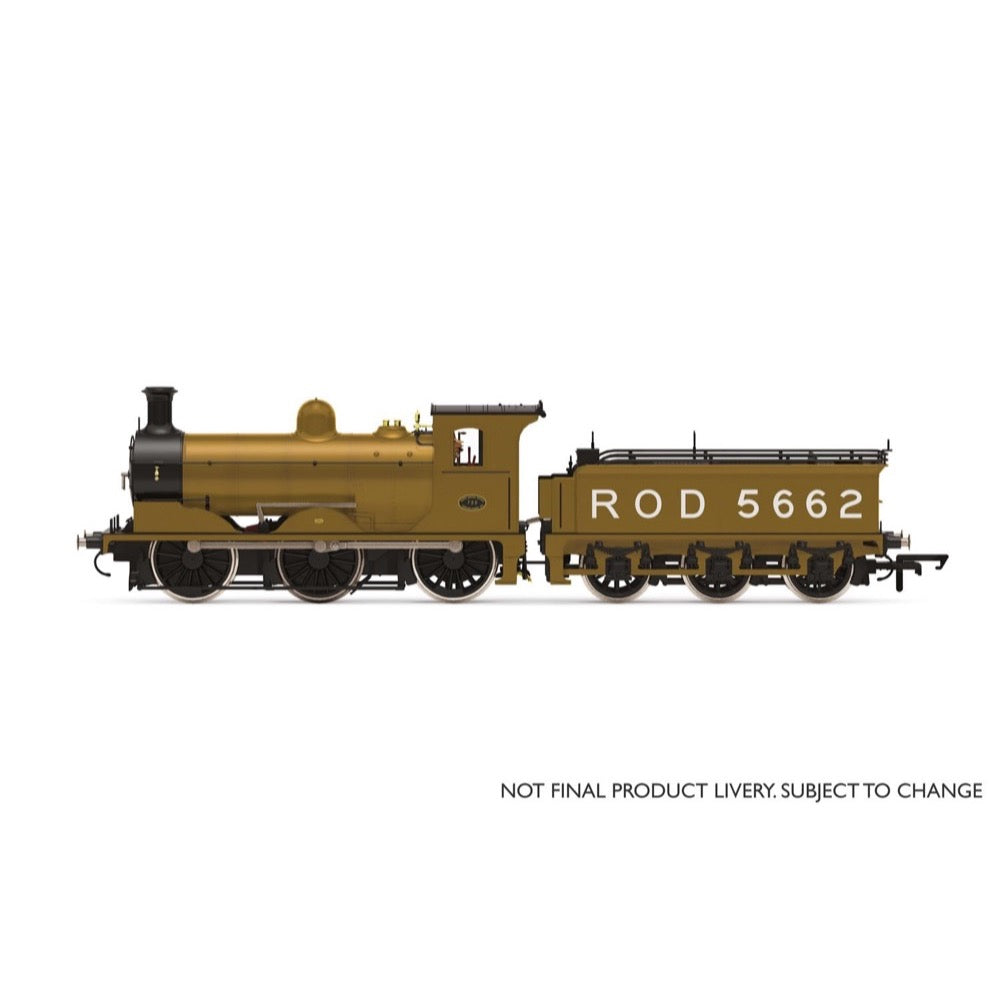
Hornby R3735 ROD J36 Class 0-6-0 5662 - Era 2
Built at Cowlairs in November 1891, NBR No. 662 was rebuilt in May 1915 and was one of twenty five Class C locomotives requisitioned by the Railway Executive on August 4, 1917 for use by the Railway Operating Division of the Royal Engineers.
Sent to the Western Front on 7 November, 1917, it is thought that ROD 5662 worked around Verquigneul in the Pas-de-Calais, proving reliable in ROD service. Returning on 12 April, 1919 to the UK, NBR 662 was named Birdwood.
Specifications
- Item Length - Without Packaging (cm): 20
- Item Height - Without Packaging (cm): 5
- Item Width - Without Packaging (cm): 3.5
- Item Weight - Without Packaging: 0.25
- Item Scale: 1:76 Scale 00 Gauge
- License: No
- Finish: Painted
- Colour: Khaki
- Gauge: OO
- DCC Status: DCC Ready 8 pin socket
- Operator: War Department
- Designer: Matthew Holmes
- Livery: ROD Khaki
- Minimum Curve (mm): Radius 2
- Motor: 5 Pole Skew wound
- Number of Parts: 1
- Class: J36 Class
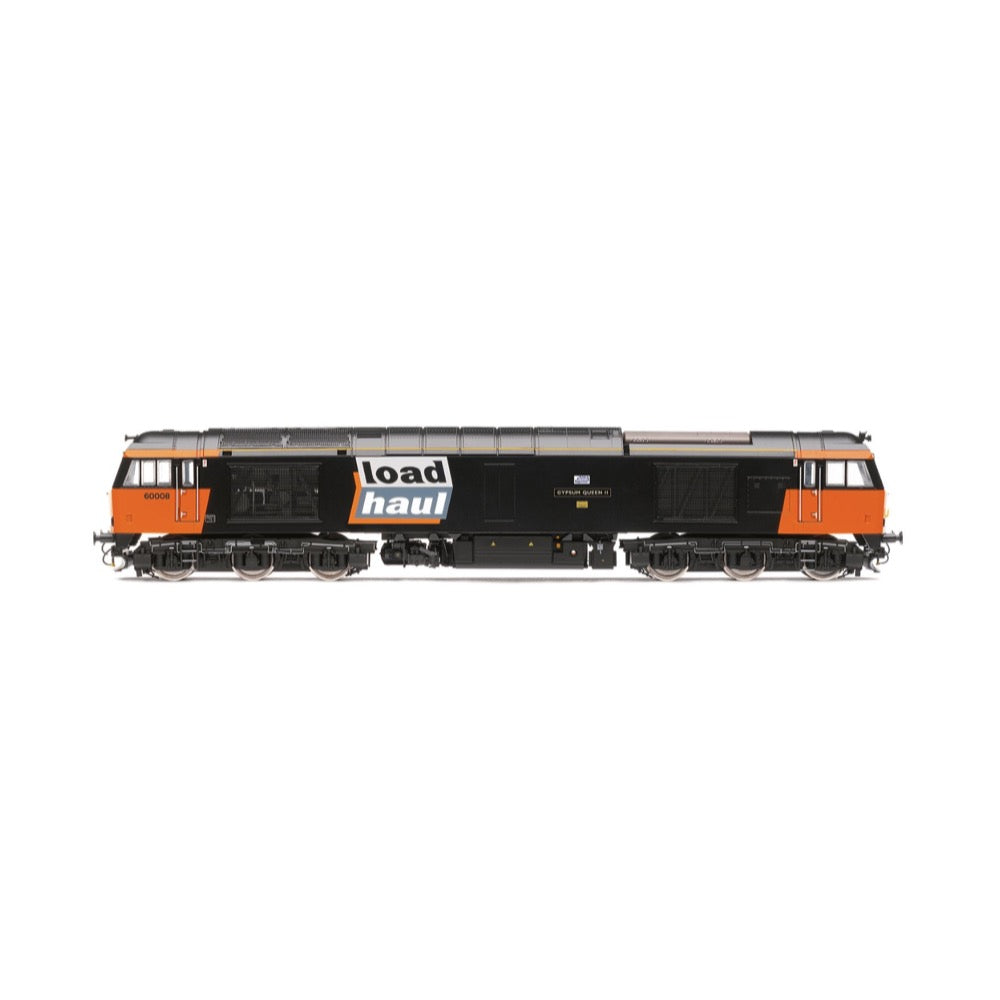
Hornby R30354TXS OO Class 60 Loadhaul 60008 Gypsum Queen II DCC Sound Fitted
No. 60008 was built at Brush Traction in Loughborough in January 1990 to Works No. 910. The locomotive was delivered at Immingham Docks on 8 December 1992 in a Trainload Metals Sector livery and sporting 'Moel Fammau' nameplates. After 3 years in service, the locomotive was renamed 'Gypsum Queen II' and was in service in a new Loadhaul livery. Its final livery was EWS maroon and yellow. On 11 April 2006, 60008 was renamed 'Sir William McAlpine'. The locomotive was withdrawn from service in September 2010 and was stored at Toton until 10 June 2022 when it was transferred to Brush. No. 60008 is sound fitted with an 21-Pin decoder and has a pre-loaded Class 60 HM7000 sound profile. The model houses a state-of-the-art sugarcube speaker.
Specifications
- Item Length - Without Packaging (cm): 28
- Item Height - Without Packaging (cm): 5.7
- Item Width - Without Packaging (cm): 3.5
- Item Weight - Without Packaging: 0.85
- Item Scale: 1:76 Scale 00 Gauge
- Finish: Painted
- Colour: Black
- Gauge: OO
- DCC Status: HM7000 Fitted - With Sound
- Operator: Loadhaul
- Designer: Brush Traction
- Wheel Configuration: Co-Co
- Livery: Loadhaul Orange & Black
- Minimum Curve (mm): Radius 2
- Motor: 5 Pole Skew wound
- Number of Parts: 1
- Class: Class 60
- Buffer Type: Metal Sprung Buffers
- Coupling Type: NEM Couplings
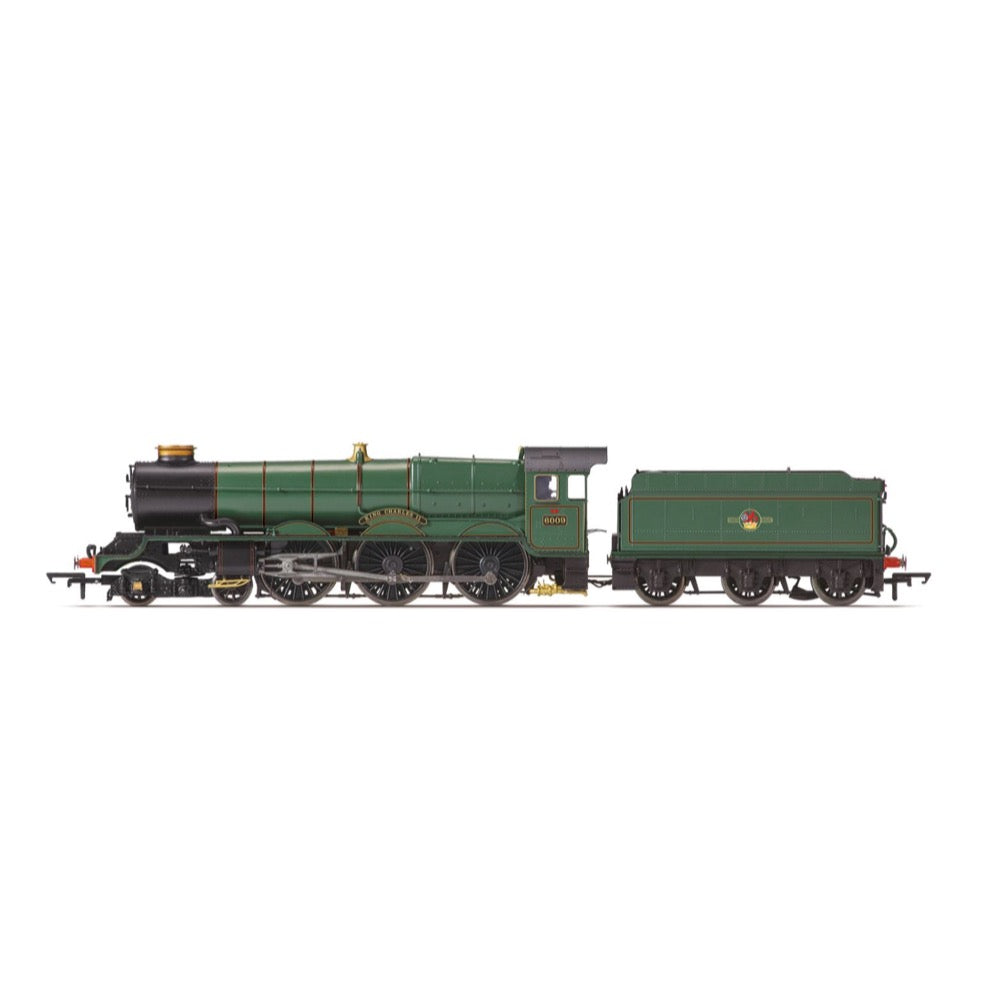
Hornby R30364 BR 6000 King Class 4-6-0, 6009 King Charles II Era 5 Locomotive
Between 1927 and 1930, 29 steam locomotives of the GWR Class 6000, also known as the King Class, were constructed. These engines were named after notable English kings, and this regality was reflected in their sleek angular lines and rivets that shimmered in the light. The regal class boasted taper boilers, copper-capped chimneys, and brass bonnet safety valve covers. Much of the class was in service on the West of England main line between Paddington and Wolverhampton.
No. 6009 ‘King Charles II’ was constructed in March 1928. After nationalisation in 1948, it was painted in a BR Black livery. ‘Alfloc’ water treatment was fitted in 1954 and a double chimney in May 1956. Withdrawn in September 1962, 6009 was scrapped at Cashmore’s.
A vibrant GWR green livery is applied on this regal model, suited to the King Class of locomotives, along with its coupled tender. Two etched nameplates of ‘King Charles II’ can be applied to the chassis, just above the wheel. Please be aware that this is not suitable for children. This model is DCC-ready and is compatible with our HM7000 21-pin decoder. The accessory bag contains a vac pipe, a bar coupling, a hook coupling, two cylinder draincocks, a brake rod and a tender brake rod.
Specifications
- Item Length - Without Packaging (cm): 28
- Item Height - Without Packaging (cm): 5
- Item Width - Without Packaging (cm): 3.5
- Item Weight - Without Packaging: 0.45
- Item Scale: 1:76 Scale 00 Gauge
- Finish: Painted
- Colour: Green
- Gauge: OO
- DCC Status: DCC Ready 21 pin socket
- Operator: BR
- Designer: Charles Collett
- Wheel Configuration: 4-6-0
- Livery: BR Green
- Minimum Curve (mm): Radius 2
- Motor: 5 Pole Skew wound
- Number of Parts: 1
- Class: 6000 King Class
- Buffer Type: Metal Sprung Buffers
- Coupling Type: NEM Couplings
- Hornby Decoder Compatibility Primary: HM7000-21TXS: Bluetooth® & DCC Sound Decoder (21-pin)
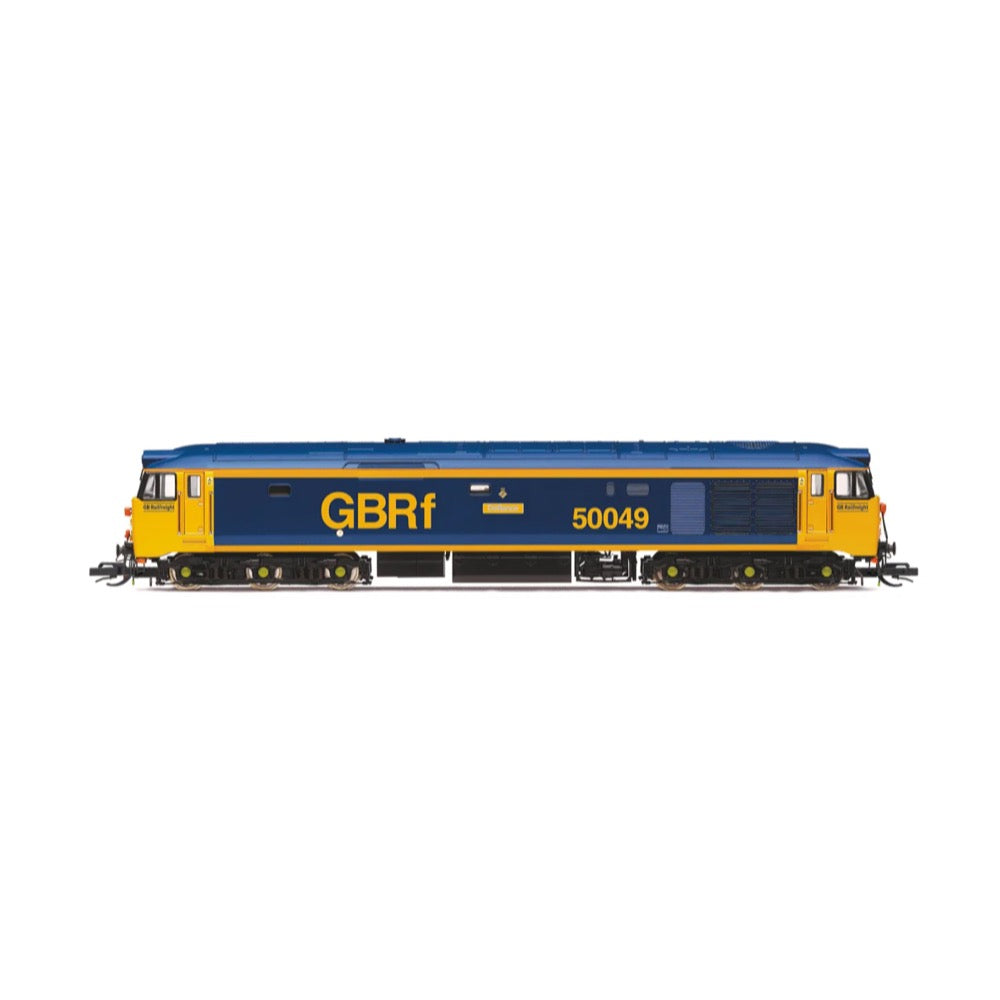
Hornby TT3015M TT GBRf Class 50 Co-Co 50049 Defiance
The Class 50 locomotives, built by English Electric at the Vulcan Foundry in Newton-le-Willows between 1967-1968 were the last purpose-designed mixed-traffic locomotive built in the UK. 50 examples were built in total. Upon their introduction they were used on the West Coast Main Line (WCML). The aim was to speed-up passenger timings on the then non-electrified portion up to Glasgow, and to haul express passenger trains at 100 mph. By 1974, the entire line had been electrified so the locomotives were re-deployed to other regions as had been planned. When delivered, the Class 50s were leased to British Rail by a subsidiary of English Electric. They were later sold to the British Railways Board.
The Class 50s proved to be incredibly powerful, indeed following the full electrification of the WCML and the introduction of more powerful DMUs in the late 1980’s they were almost pointlessly powerful, and they began to be withdrawn as their roles were handed to more efficient DMUs. All examples of the Class were named which was rather unusual for corporate BR diesel locomotives, and in the end 18 examples have been preserved.
50007 started life as D407 in 1968, being named Hercules after a Royal Navy ship in 1978. The locomotive would go on to become Sir Edward Elgar in 1984, a name that it would keep into recent preservation, carrying it from withdrawal in 1991 until 2014 when it reclaimed its original name of Hercules. Hercules is now based at the Severn Valley Railway and is dual named as Warspite, one of its classmates that was scrapped in 1989.
Specification
- Item Length - Without Packaging (cm): 17.4
- Item Height - Without Packaging (cm): 3.3
- Item Width - Without Packaging (cm): 2.3
- Item Weight - Without Packaging: 0.18
- Item Scale: 1:120 Scale
- Finish: Painted
- Colour: Blue
- Gauge: TT
- DCC Status: Next 18 Socket (NEM 662)
- Operator: GBRf
- Designer: English Electric
- Wheel Configuration: Co-Co
- Livery: GBRf Blue
- Minimum Curve (mm): Radius 2
- Motor: 5 Pole
- Number of Parts: 1
- Class: Class 50
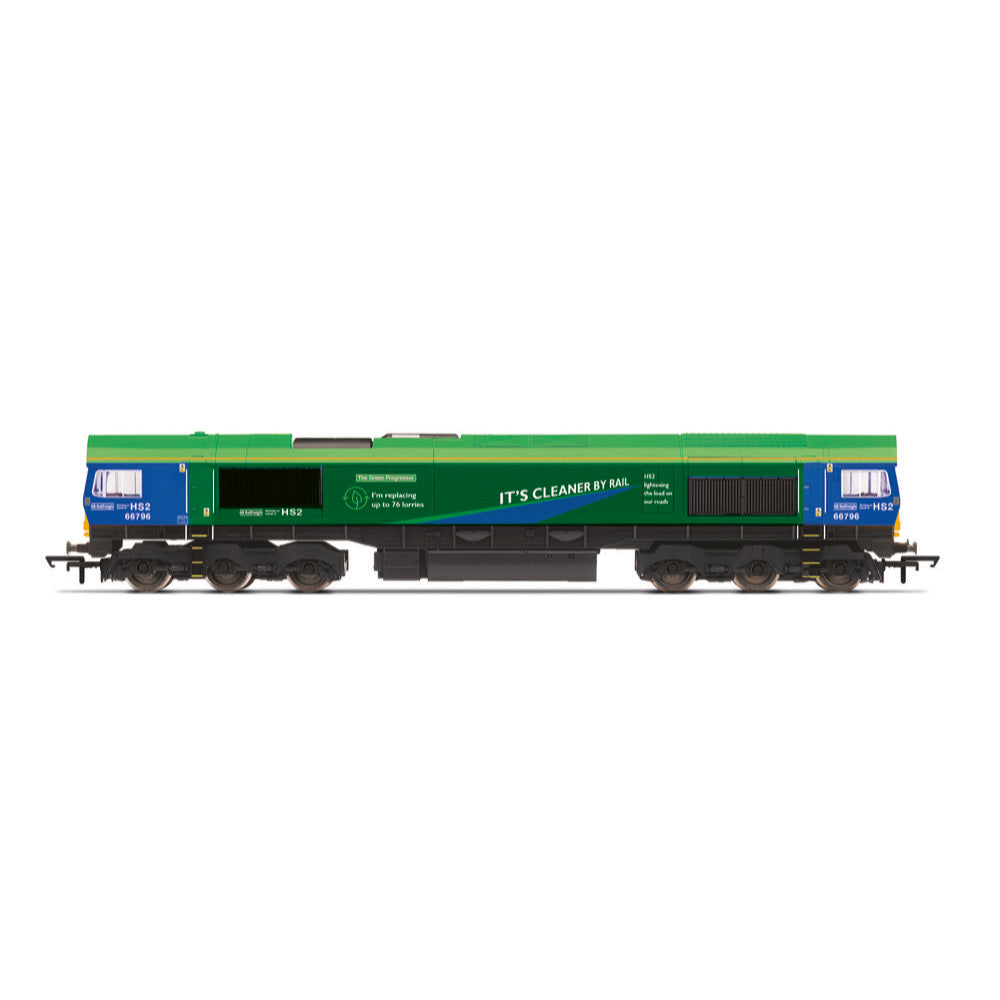
Hornby R30151 OO GBRf HS2 Class 66 Co-Co 66796 The Green Progressor
While the Class 66s began their service in 1998, No. 66796s unique livery and service reflect a modern preoccupation with promoting environmental awareness.The HS2 owned locomotive is part of an active drive to promote the environmental benefits of delivering construction materials by rail instead of road, which inspired the name 'The Green Progressor'. The intention is that for every locomotive HS2 uses to transport aggregates and construction materials, up to 76 lorries are removed from the UK's roads and motorway network. 'The Green Progressor' is both innovative and a benefit of tradition; in returning focus to our beloved railways we boost efficiency and reduce emissions.
Specification
- Item Length - Without Packaging (cm): 28
- Item Height - Without Packaging (cm): 5
- Item Width - Without Packaging (cm): 3.5
- Item Weight - Without Packaging: 0.42
- Item Scale: 1:76 Scale 00 Gauge
- Finish: Painted
- Colour: Green
- DCC Status: DCC Ready 21 pin socket
- Operator: Malcolm Logistics
- Designer: Electro-Motive Diesel
- Livery: HS2 Class 66
- Minimum Curve (mm): Radius 2
- Motor: 5 Pole Skew wound
- Number of Parts: 1
- Class: Class 66
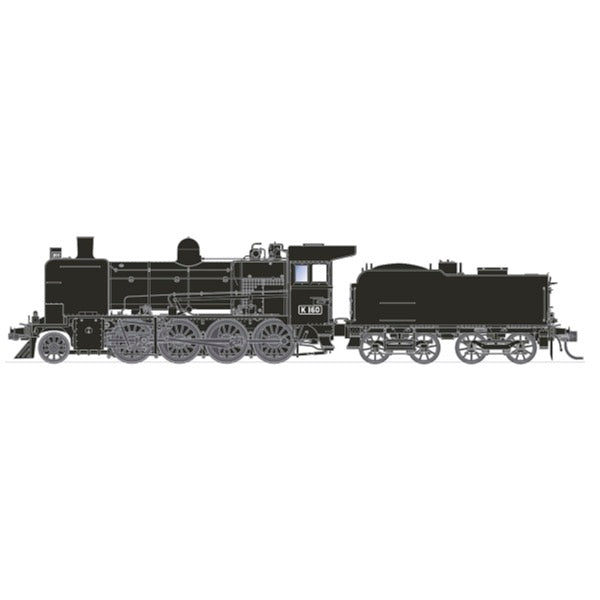
Phoenix Reproductions HO K160 Victorian Railways K Class Locomotive DCC Sound
The Victorian Railways built 53 K class engines at Newport Workshops over a 24 year period, commencing in 1922. The first series of 10 engines were progressively rebuilt in the 1940s to match the performance and visual appearance of the other class members. Later in 1946 the last 9 engines entered service, these engines had single cab side windows and the last 7 engines were fitted Boxpok style driving wheels.
They were extremely versatile engines and could be found and all classes of trains, many worked until the late 1960s and several into the early 1970s.
The Phoenix Reproductions model represents the class in it's later years of government service as well as several colourful liveries of early days preservation.
Features
- Highly detailed Ready-to-Run HO gauge model
- Diecast boiler, frame and footplate
- Genuine Kadee scale head whisker coupler (Tender)
- Separately applied boiler details
- Working LED lights
- All models come standard with an MTC 21 pin motherboard
- Keep Alive Circuit
- DCC version with LokSound V5 decoder
- 22" Minimum Radius


